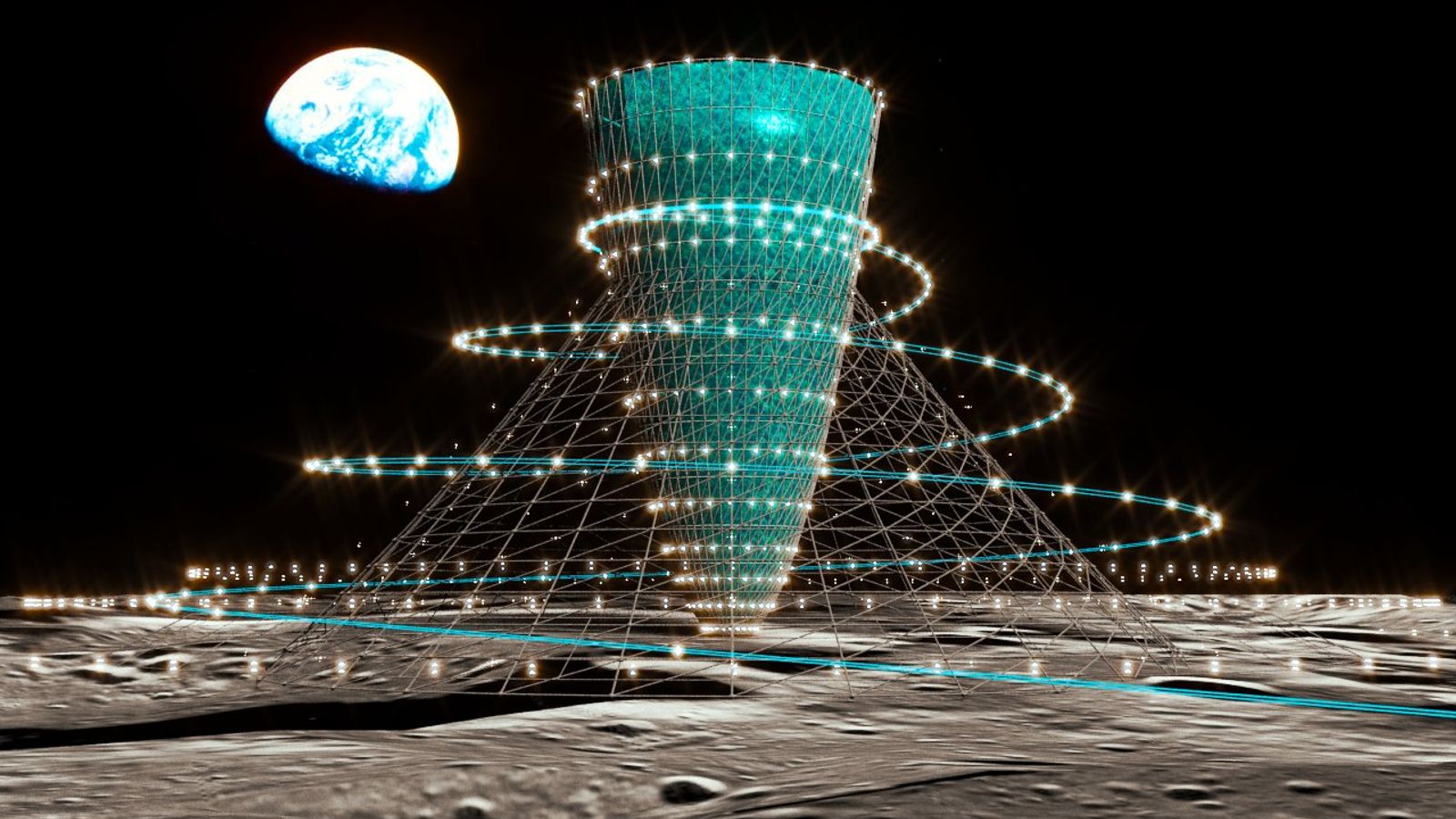Japanese researchers have proposed constructing artificial-gravity buildings on the Moon and Mars which could help reduce health risks to humans in space.
Their proposals follow a study published earlier this month which found astronauts suffered significant bone loss while in low-gravity environments.
Only about half of this bone loss was recovered a year after the astronauts returned to Earth – raising concerns about future missions to Mars and the Moon.
Now researchers from Kyoto University and Kajima Corporation have proposed huge rotating structures that would create the effect of Earth-like gravity through centripetal force.
They propose building a living facility on the Moon called Lunar Glass which will be close to 400 metres tall and complete a full rotation every 20 seconds.
A similar facility called Mars Glass is proposed for Mars.
Renderings of these buildings shared by the SIC Human Spaceology Centre at Kyoto University are similar to the space station in the 2013 science-fiction film Elysium, although much smaller in scale.
Shinzo Abe’s party on course to increase upper house majority after former PM’s assassination
Shinzo Abe: Police admit security flaws as body of assassinated former Japanese PM is taken home
Shinzo Abe: Gunman admits shooting dead former Japanese prime minister, police say
The multi-story surfaces of the rotating buildings are surrounded by liquid water and land with trees, creating a mini-biome with water and carbo cycles to sustain human populations.
Alongside these facilities, the researchers proposed an interplanetary transportation system that maintains Earth-like gravity en route called the Hexatrack system.
The carriages of the land-based Hexatrack train would be separated at injector stations and then inserted into a rotating hexagonal pod which also generates centripetal force while travelling through space.
Rotational simulated gravity is already used in high-g centrifuges to train astronauts and aviators.
Science-fiction films including Elysium, Interstellar, and 2001: A Space Odyssey feature spacecraft that rotate to create artificial gravity – although no existing spacecraft has yet ever been designed to simulate it.
The researchers have proposed the whole system alongside announcing a joint study into achieving the plan – although they don’t expect it will deliver results immediately.
“There is no plan like this in other countries’ space development plans,” said Yosuke Yamashiki, the director of the SIC Human Spaceology Centre.
“Our plan represents important technologies crucial to ensuring human beings will be able to move to space in the future,” he added.
They caution that constructing the full-size facilities will take around 100 years, although they hope to build a simplified version on the Moon by 2050.











